Florida Oak Trees encompass a diverse array of species that grace the landscapes of the Sunshine State with their beauty, resilience, and ecological significance. From the towering Southern Live Oak draped in Spanish moss to the diminutive Chapman Oak nestled among coastal dunes, these trees contribute to Florida’s rich natural heritage.
Florida oak trees can be found all over the state, from the panhandle to the southernmost point. They grow well in a range of environments, from marshy marshes to sandy ridges. Every species has its own distinct qualities, such as the Laurel Oak’s magnificent grandeur and the Myrtle Oak’s compact form.
With their glossy foliage, rugged bark, and abundant acorns, Florida Oak Trees serve as vital components of the state’s ecosystems, providing habitat and sustenance for numerous wildlife species.
Different Types of Florida Oak Trees
Southern Red Oak
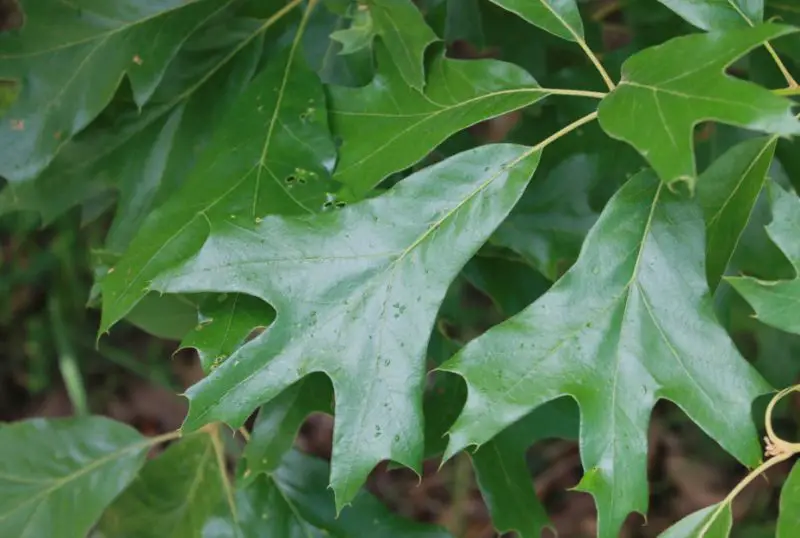
Scientifically referred to as Quercus falcata, the Southern Red Oak is a powerful giant that can withstand even the strongest hurricanes. In any scene, it draws attention with its open growth and broad, rounded canopy.
It was well-liked in the Spanish colonial zone of North America and was formerly called Spanish oak. It stands out from other plants with its enormous, glossy deciduous leaves, which are 4 to 5 inches wide and 5 to 9 inches long. They can be easily identified because of their notably longer and thinner terminal lobe. These leaves turn a beautiful brown in the fall and winter before new growth appears in the spring.
A sight to behold, the Southern Red Oak’s bark has ridges that resemble cherry bark and colors ranging from dark gray to black.
It grows rather quickly and performs well as a street tree, reclamation, specimen, or shade tree. It is the embodiment of resilience and beauty in the southern region, growing well in a variety of soil types, showing off a strong tolerance to drought, and flourishing in full sun.
Water Oak

One of the best oak species in the southern half of the state is the water oak (Quercus nigra), which is native to Florida’s marshy areas.
Notably, water oaks are excellent alternatives for the subtropical climate of southern Florida since they flourish in the warm climates of USDA growth zones 6a through 10a. Even in the colder months, their semi-evergreen status adds a hint of greenery, and their spreading, rounded canopy offers plenty of shade.
Water oaks are characterized by glossy green leaves with light undersides. The leaves are shaped like a rounded paddle and range in length from 2 to 4 inches. Though good for animals, its abundant acorn production can be an annoyance because it may discolor concrete and asphalt surfaces.
Even though they grow quickly, water oaks only live 30 to 50 years on average, especially in soil that is moist and rich in nutrients. Often referred to as Possum Oak or Black Oak, they add to the diverse range of ecosystems found in Florida’s marshes.
Willow Oak
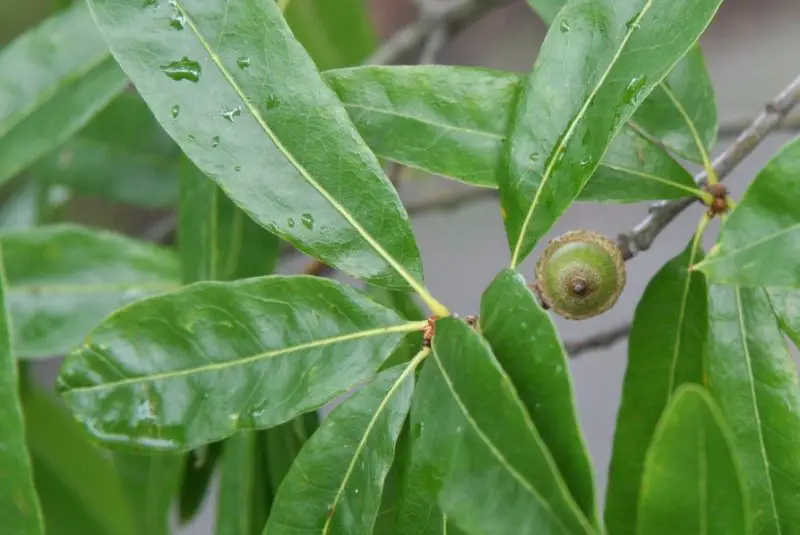
Quercus phellos, or willow oak, gets its name from the willow tree because of the way its leaves fall and resemble weeping willow branches. Although it is not a native of Florida, it is a common tree there. Its light to brilliant green foliage becomes yellow-brown in the fall (though in Florida it usually just turns brown) and then reverts to vibrant green in the spring.
Willow oaks are not native to Florida, but they are planted extensively there and add beauty to landscapes as street lights, park ornaments, and shade trees. This oak tree has fast growth and dense foliage that changes into a rounded appearance as it ages from a youthful pyramid shape.
Willow Oak grows well in full sun and is especially advantageous to coastal areas due to its extraordinary resilience to aerosol salt. Its great drought tolerance also makes it a sensible option for Florida’s dry climate, which contributes to its widespread appeal among homeowners and landscapers in USDA growth zones 6A through 9A.
Bluff Oak
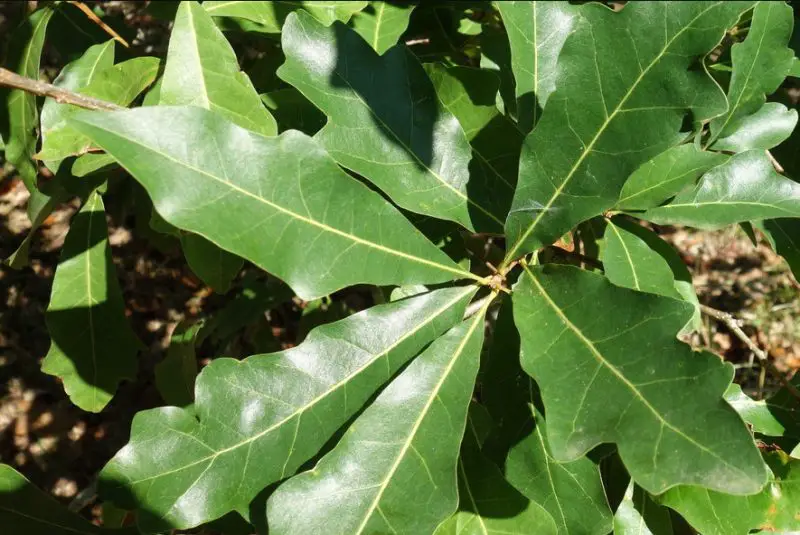
Commonly found along stream banks in northern Florida and the panhandle, bluff oaks (Quercus austrina) share their habitat with red maples, elms, and black gums, all of which flourish there. But because of its adaptability and visual attractiveness, Florida landscapers also favor it.
The shiny upper surface and light underside of Bluff Oak’s dark green, lobed leaves give a striking visual element to landscapes. Its deciduous leaves may become brown or fall off, but in colder seasons, they may take on hues of copper, yellow, or orange before dropping.
Like Shumard Oak, Bluff Oak is preferred for streets, boulevards, and parking lots because of its wide crown development needs and resistance to pests and diseases.
With its remarkable drought resistance and ability to thrive in full sun and well-drained soil, this oak is a low-maintenance yet eye-catching addition to any landscape.
It thrives in USDA growth zones 8A to 9B and, at maturity, reaches heights of 40 to 60 feet and widths of 35 to 50 feet. Known by another name, Bastard White Oak, it lends a natural beauty to outdoor areas.
Chinkapin Oak

Quercus muehlenbergii, sometimes known as the Chinkapin Oak, is a great option for big yards, estates, or parks that need imposing trees. As it ages, this sprawling shade tree with a slow to medium growth rate assumes a rounded and dominant appearance.
With medium-sized to huge, glossy, dark green leaves that range in length from 4 to 6 ½ inches, Chinkapin Oak provides year-round visual appeal. While Florida leaves don’t always change color in the fall, lucky watchers can catch breathtaking changes to yellow-orange or orangish-brown hues.
The ashy light gray bark of Chinkapin Oak is characterized by thin, narrow flakes. It is somewhat drought-tolerant and adapts well to a variety of soil types, including moist soils. It also goes by the name Chestnut Oak, so named for its edible acorns that resemble chestnuts and give visual and culinary appeal to outdoor areas.
This magnificent oak, which thrives in USDA growth zones 3A to 8B, reaches maturity heights of 40 to 60 feet and widths of 50 to 60 feet. Its enduring presence adds beauty to any landscape.
Overcup Oak
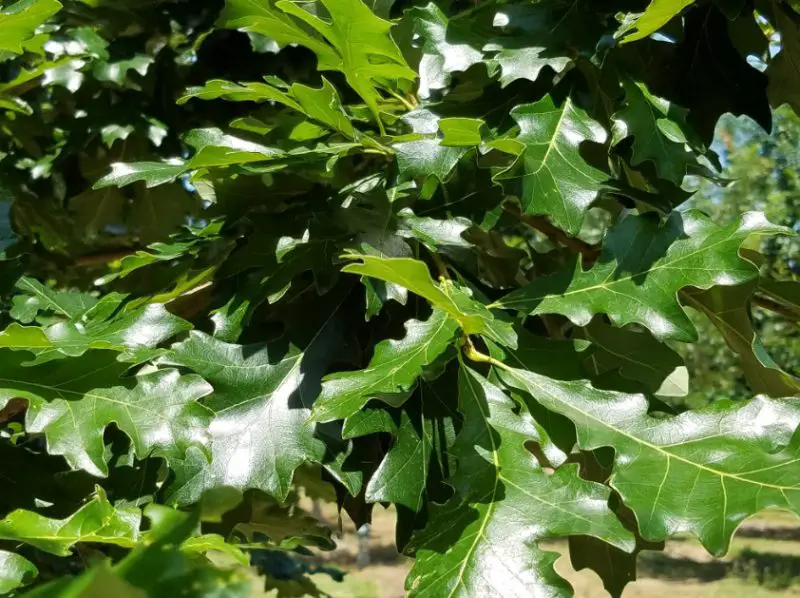
Even while Overcup Oak (Quercus lyrata) grows more slowly than its cousins, its neat and consistent shape makes it a valued feature in urban settings.
This oak is prized for its stunning reddish or gray-brown bark. It also has leathery, dark green leaves with fuzzy white undersides that are visually appealing all year round. Although the foliage usually turns a beautiful yellow-brown color in the fall, this sight is more common in the state’s northern regions.
Overcup Oak gets its popular name from its spherical, ¾ to 1 inch diameter acorns that cover the nut nearly completely. Although wildlife is drawn to these acorns, they can also cause some mess.
Overcup oak, sometimes called swamp post oak or swamp white oak, thrives in a range of soil types and prefers full sun. It adapts well to a variety of situations and improves landscapes in USDA growing zones 6A to 9A.
This oak, which matures to heights of 45 to 70 feet and widths of 35 to 50 feet, is a wonderful example of outdoor beauty and adaptability.
Post Oak
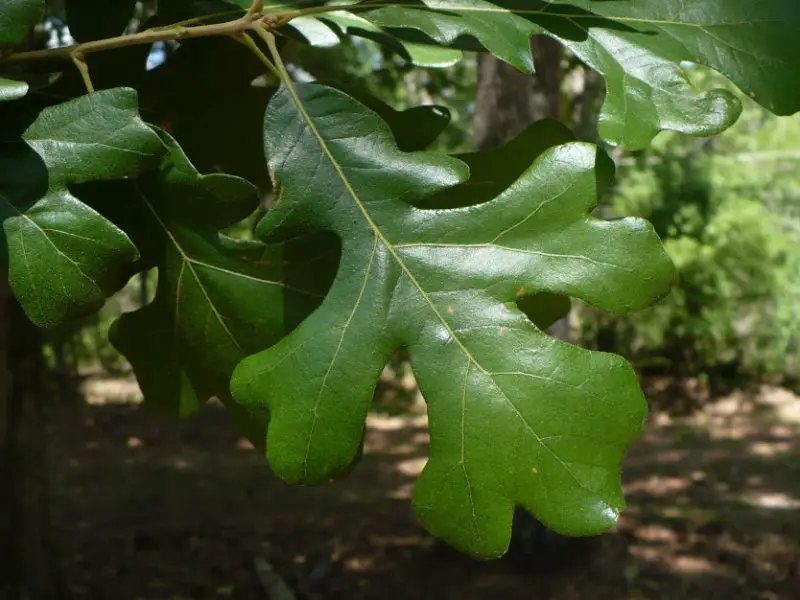
Quercus stellata, or post oak, is a drought-tolerant plant that grows well in sandy, low-fertility soils. This slow-growing oak is usually not found in nurseries; instead, it is more commonly seen on the outskirts of fields, where it thrives in its natural habitat.
Post Oak is a distinctive tree with leathery texture and small hairs underneath. Its leaves have three terminal lobes that are perpendicular to each other, giving them the appearance of a Maltese cross. Its strong bark adds even more resilience by allowing it to survive forest fires.
Acorns from Post Oak trees are essential food sources for deer, squirrels, and other rodents in forested environments, helping to maintain the ecological balance.
This species, which is also called Iron Oak, Box White Oak, or Rough Oak, grows well in USDA growth zones 6A through 9A. When fully grown, post oak trees often reach heights of 40 to 50 feet and spreads of 35 to 50 feet. In their natural habitat, post oak trees have both aesthetic value and ecological relevance.
White Oak
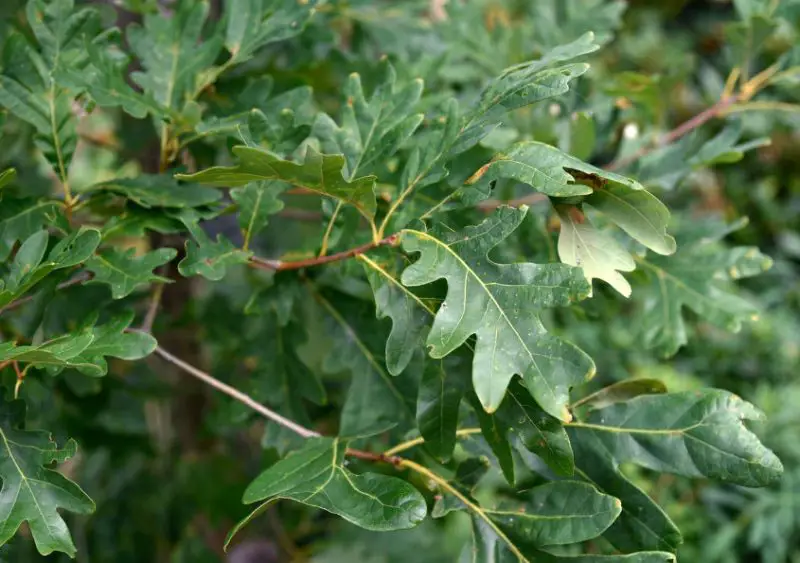
The dignified presence of the white oak (Quercus alba) adds grandeur, beauty, and longevity to landscapes. Its year-round warmth in southern Florida hinders its growth, but its charm is limited to people in north Florida and the panhandle, where it flourishes.
In Florida, White Oaks exhibit their most striking look during their brief dormant season, which is marked by light gray, plated bark and an open crown. Its glossy, blue-green leaves, which have pale undersides, change color in late fall to wine-red or orange-red before turning brown and remaining on the tree during the brief Florida winter.
White oaks require careful planning when planting since their mature, six-foot-diameter trunks take up a lot of room in a large landscape. This tree requires time to grow, but it rewards it with sturdy limbs that can resist storms.
White oak, which thrives in USDA growth zones 3B to 8B, usually reaches heights of 50 to 80 feet and spreads between 50 and 80 feet. It is a symbol of classic elegance and hardiness in outdoor settings.
Turkey Oak
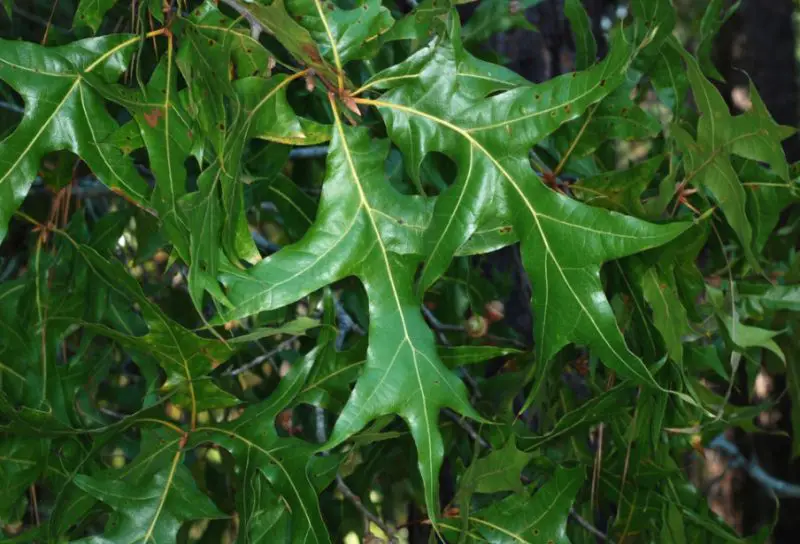
Among oaks, the Turkey Oak (Quercus laevis) is particularly well-liked by wildlife, enticing deer, squirrels, and even turkeys with its bountiful production of acorns. Its name, contrary to popular perception, comes from the unique shape of its leaves, which resembles the foot of a turkey, not from the acorns’ attractiveness to turkeys.
Turkey oak is a hardy choice for natural settings since it grows well next to pine trees in dry, sandy environments, where it is common in Florida’s forests. Its small to medium-sized home landscapes can benefit from its compact design, and hurricane-prone areas can greatly benefit from its strong wind resistance.
Granted its robustness and advantages to wildlife, some homeowners may find Turkey Oak less suited due to its high pollen production, which might cause allergies. However, Turkey Oak, which grows to heights of 20 to 30 feet with a similar spread, is a delightful addition to outdoor settings for those in USDA growth zones 7B to 10A. It also enhances the natural beauty and biodiversity of its surroundings.
Chapman Oak

The Chapman Oak, or Quercus chapmanii, is named for the famous botanist and surgeon A.W. Chapman, who initially described this species of oak in his landmark book “Flora of the Southeastern United States.”
In its native habitat, which is found throughout Florida’s coastal dunes and dry, sandy ridges, Chapman Oak takes on the shape of a small, shrub-like tree with several stems that rarely grows taller than thirty feet. With glossy dark green leaves that contrast with a light gray to yellow underside, this plant is semi-evergreen in warmer climates and has deciduous tendencies in northern Florida.
Chapman Oak is a springtime bloomer with quickly maturing acorns that draw a variety of species, such as Florida scrub jays, woodpeckers, wild turkeys, squirrels, raccoons, and white-tailed deer.
Prospective gardeners should be aware, nevertheless, that the pollen of Chapman Oak trees is a strong allergen, so people who are prone to seasonal allergies should exercise caution when planting.
Growing to modest heights of 5 to 15 feet with a corresponding spread, Chapman Oak thrives in USDA growth zones 8B to 10B and adds aesthetic appeal and ecological relevance to Florida landscapes.
Myrtle Oak
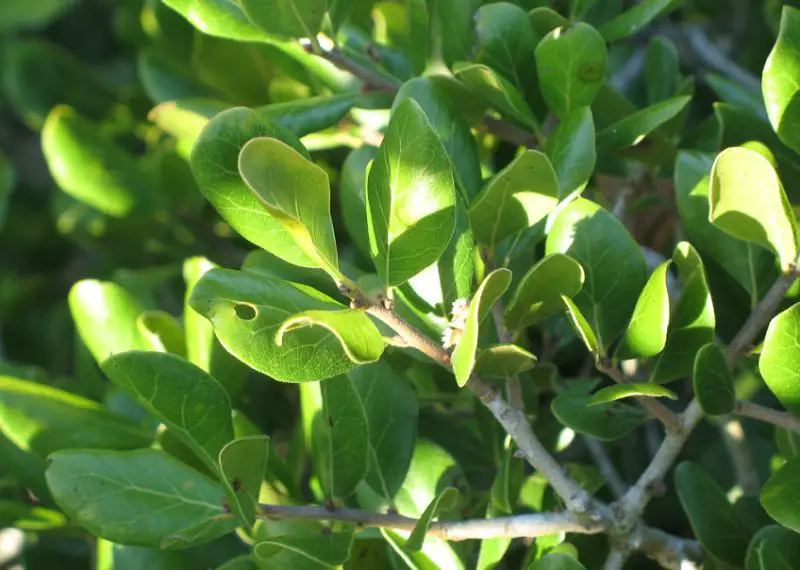
The name “Myrtle Oak” (Quercus myrtifolia) comes from the leaves of this plant that resemble those of plants in the Myrtus genus, sometimes known as myrtle plants. This shrub oak is widely distributed throughout the Florida coast, especially in dry, sandy soils. It has smooth, dark brown bark and a spreading, rounded crown.
Myrtle Oak is characterized by glossy, leathery, dark green leaves that are about two inches in length. The undersides of the leaves range from yellow-green to orangish-brown. It can withstand a wide range of light conditions and grows well in both full sun and partial shade. However, because it is an understory plant, too much shadow may impede its growth.
Myrtle oak is a great compact screen or hedge for tiny yards, providing both decorative appeal and practical use. planting in USDA planting zones 8A to 9B, it usually reaches 15 to 20 feet in height and 8 to 10 feet in spread when mature. Its compact size and durable evergreen foliage make it an attractive addition to coastal settings.
Bluejack Oak
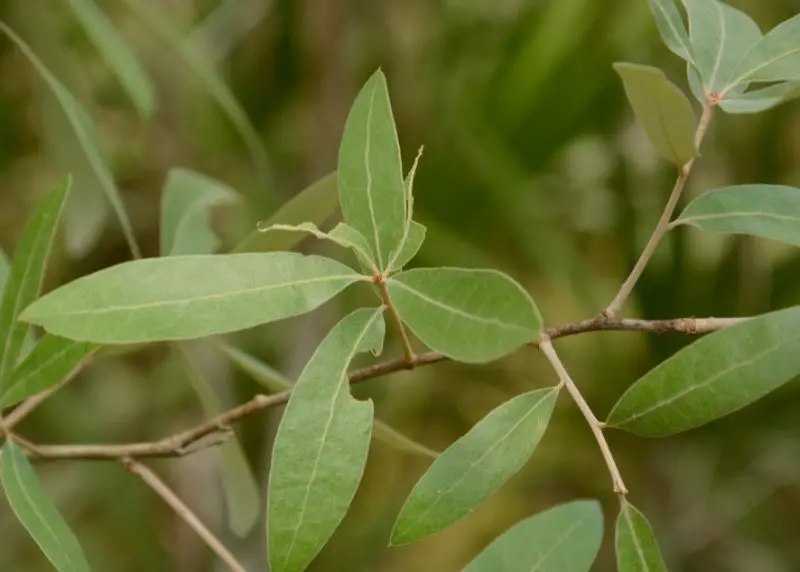
The name “Bluejack Oak” (Quercus incana) comes from the unusual blue color of its deciduous leaves, which set it apart in the untamed environments of sandy ridges, scrublands, and hills found in Florida’s subtropical zones. The Bluejack Oak thrives in the sandy soils of its native habitat, often mixed together with native pines.
This oak displays a distinctive foliage color scheme with its upper side having bluish to ashy green leaves and its undersides being silvery. Its thick, deeply grooved bark, which ranges in color from dark gray to black, contributes to its rustic allure.
The trend toward smaller shade trees, such as Bluejack Oak, has increased as suburbanization spreads throughout Florida. These trees provide functionality without compromising aesthetics. Furthermore, it may be trained to keep its tidy, symmetrical appearance with judicious pruning.
It is important to remember that although Bluejack Oak has both practical and aesthetic advantages, its acorns have the potential to discolor light-colored pavement. Typically reaching heights of 20 to 40 feet with a similar spread, Bluejack Oak thrives in USDA growth zones 7A to 9B and adds to the rich and hardy flora of Florida landscapes.
Laurel Oak
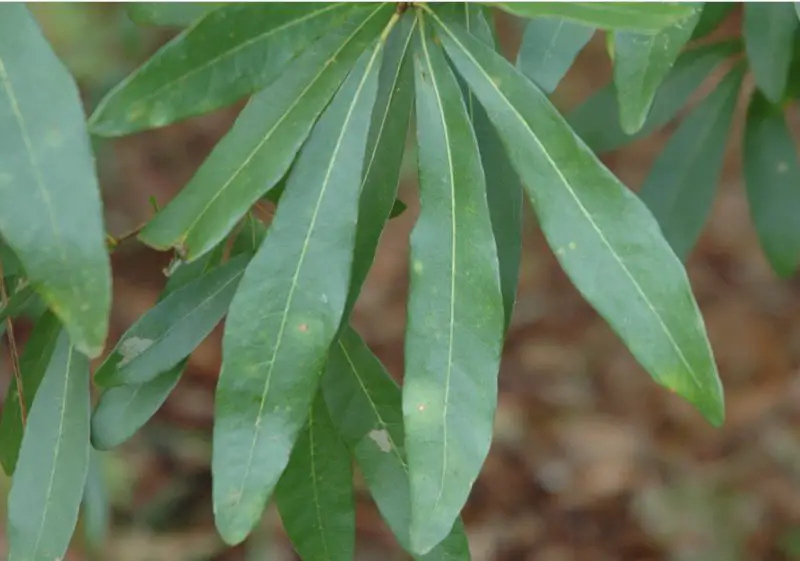
Laurel oak, or Quercus laurifolia, is a fast-growing ornamental oak that grows well in suburban Florida. Rich in shade due to its rounded to oval crown and dense canopy, it is a treasured addition to any landscape.
The tree’s glossy green tops and smooth, light green undersides give its bay-like leaves its name and add to their visual appeal. The Laurel Oak is a tall, attractive tree that is adored by both landscapers and homeowners for its quick growth and abundant shade.
In northern Florida, this semi-evergreen to deciduous tree loses its leaves in late fall; in warmer climates, it keeps some foliage all year round. Subtle catkins in the spring turn into spherical, brown acorns by autumn.
Although Laurel Oaks usually live for 50 to 70 years, they have problems including wood rot and decay that hollow out their trunks. But its capacity to withstand damp conditions and adjust to different types of soil makes it a durable and adaptable option for both gardens and urban settings.
Shumard Oak
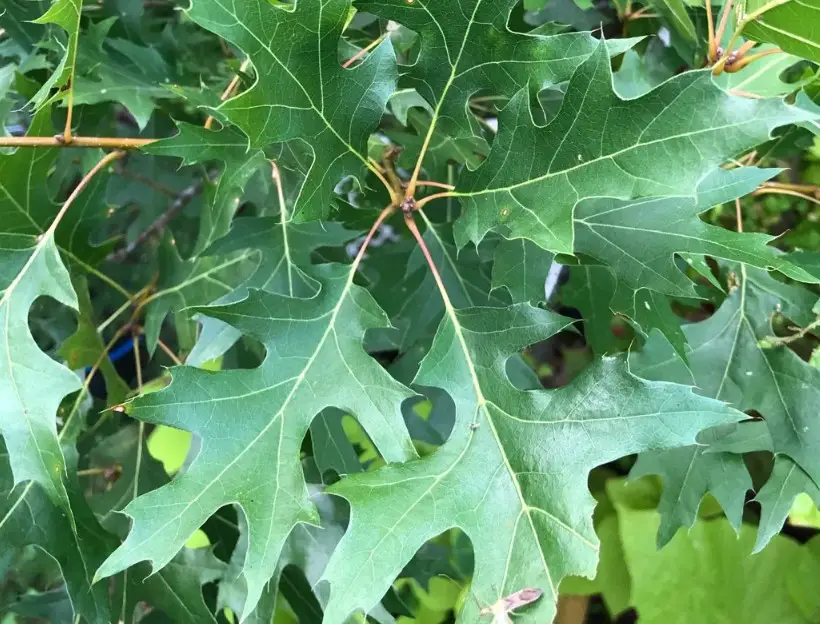
The Shumard Oak, scientifically known as Quercus shumardii, is a common sight in north Florida’s panhandle and parking lot islands, residential landscapes, and commercial locations. Its visual beauty is the only thing that can rival its robustness as one of the largest in the red oak group.
This deciduous tree provides year-round beauty and is resistant to drought, compacted soil, air pollution, and poor drainage. Large, deeply lobed leaves that are usually 4 to 8 inches long change from a dark green to a vivid crimson or reddish-orange color in the fall, adding breathtaking autumnal hues to Florida’s scenery.
The Shumard Oak offers lots of shade and draws wildlife with its large acorns. It has an open, broad crown that gets bigger as it ages. It is a flexible and long-lasting icon of natural grandeur in Florida’s planting zones, and it can grow in a variety of soil types with full sun exposure.
Black Oak
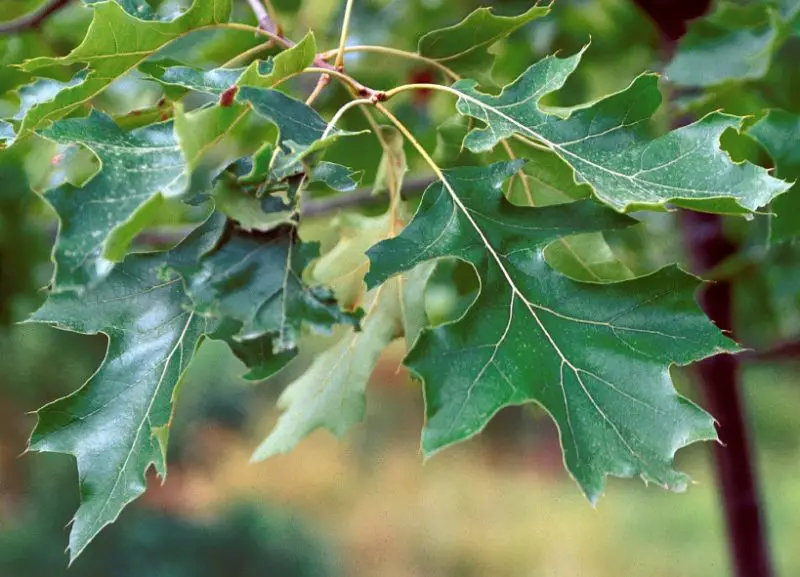
In the Florida panhandle and throughout the eastern half of North America, black oaks (Quercus velutina) are a common sight. They grow well in a variety of forest conditions, from moist, rich soils to dry slopes, though they are rarely found in bottomlands.
The Black Oak tree, which has glossy, deep green leaves that are 4 to 8 inches long and have yellowish-brown undersides, gets its name from its coarse, blackish bark. This stately tree can grow to be quite tall, so give it plenty of room to spread out. It can be used as a street tree or to provide shade in large open spaces.
This adaptable species, often called Eastern Black Oak or Yellow Oak, grows well in USDA growth zones 3A through 9B. It usually reaches heights of 50 to 60 feet with a similar spread. Its springtime blooming season signals the beginning of fresh development, adding to the diverse fabric of North American landscapes.
Southern Live Oak
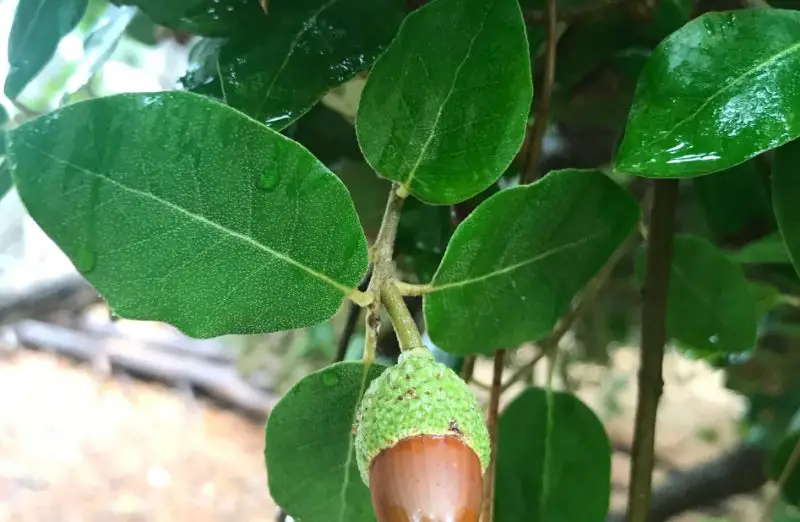
With its expansive branches covered in Spanish moss, the Southern Live Oak (Quercus virginiana) is the ultimate representation of the Old South, conjuring up visions of grandeur and the past. This evergreen tree, which is widespread throughout central and upper Florida, can be found in parks, mansion yards, historic plantations, and residential neighborhoods. Its unmatched scenic beauty enhances any landscape.
This magnificent tree, which usually has a rounded, wider-than-tall profile, grows quickly in youth and lives for hundreds of years. It’s a perfect choice for Florida’s hurricane-prone areas because of its thick, twisting branches, which show exceptional wind resistance.
With age, the first reddish-brown and deeply furrowed bark turns a harsh, nearly black color. The glossy, dark green, leathery leaves of the Southern Live Oak are 2 to 5 inches long, with a pale underside. The leaves remain in place until spring, when new growth emerges to replace the old.
This oak can grow in a variety of soil types, likes moderate moisture content, and can withstand both floods and droughts quite well. Its adaptability is further demonstrated by the diminutive form it takes on when planted in dry locations.
Known by its common name, Live Oak, it thrives in USDA growth zones 7B to 10B. It reaches heights of 60 to 80 feet and magnificent spreads of 60 to 120 feet, perfectly capturing the durability and timeless beauty of the Southern region.






